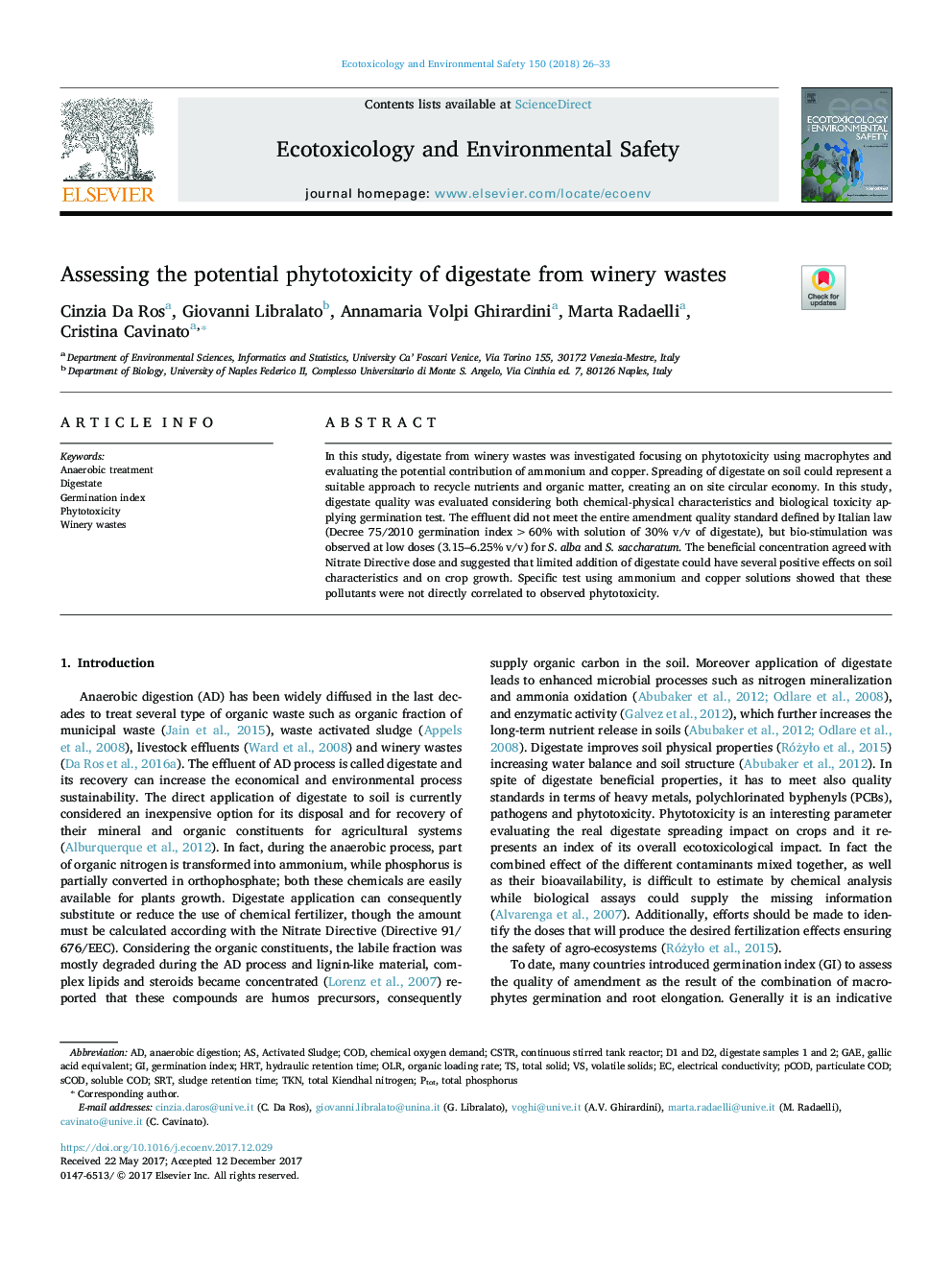| Article ID | Journal | Published Year | Pages | File Type |
|---|---|---|---|---|
| 8854354 | Ecotoxicology and Environmental Safety | 2018 | 8 Pages |
Abstract
In this study, digestate from winery wastes was investigated focusing on phytotoxicity using macrophytes and evaluating the potential contribution of ammonium and copper. Spreading of digestate on soil could represent a suitable approach to recycle nutrients and organic matter, creating an on site circular economy. In this study, digestate quality was evaluated considering both chemical-physical characteristics and biological toxicity applying germination test. The effluent did not meet the entire amendment quality standard defined by Italian law (Decree 75/2010 germination index > 60% with solution of 30% v/v of digestate), but bio-stimulation was observed at low doses (3.15-6.25% v/v) for S. alba and S. saccharatum. The beneficial concentration agreed with Nitrate Directive dose and suggested that limited addition of digestate could have several positive effects on soil characteristics and on crop growth. Specific test using ammonium and copper solutions showed that these pollutants were not directly correlated to observed phytotoxicity.
Keywords
D1 and D2PCODPTOTCSTRsRTHRTTKNOLRSCODGAESoluble CODchemical oxygen demandTotal Solidvolatile solidsAnaerobic treatmentDigestatecontinuous stirred tank reactorElectrical conductivitySludge retention timehydraulic retention timeGermination indexWinery wastesPhytotoxicityActivated sludgeGallic acid equivalentOrganic loading rateAnaerobic digestionCodTotal phosphorus
Related Topics
Life Sciences
Environmental Science
Environmental Chemistry
Authors
Cinzia Da Ros, Giovanni Libralato, Annamaria Volpi Ghirardini, Marta Radaelli, Cristina Cavinato,
